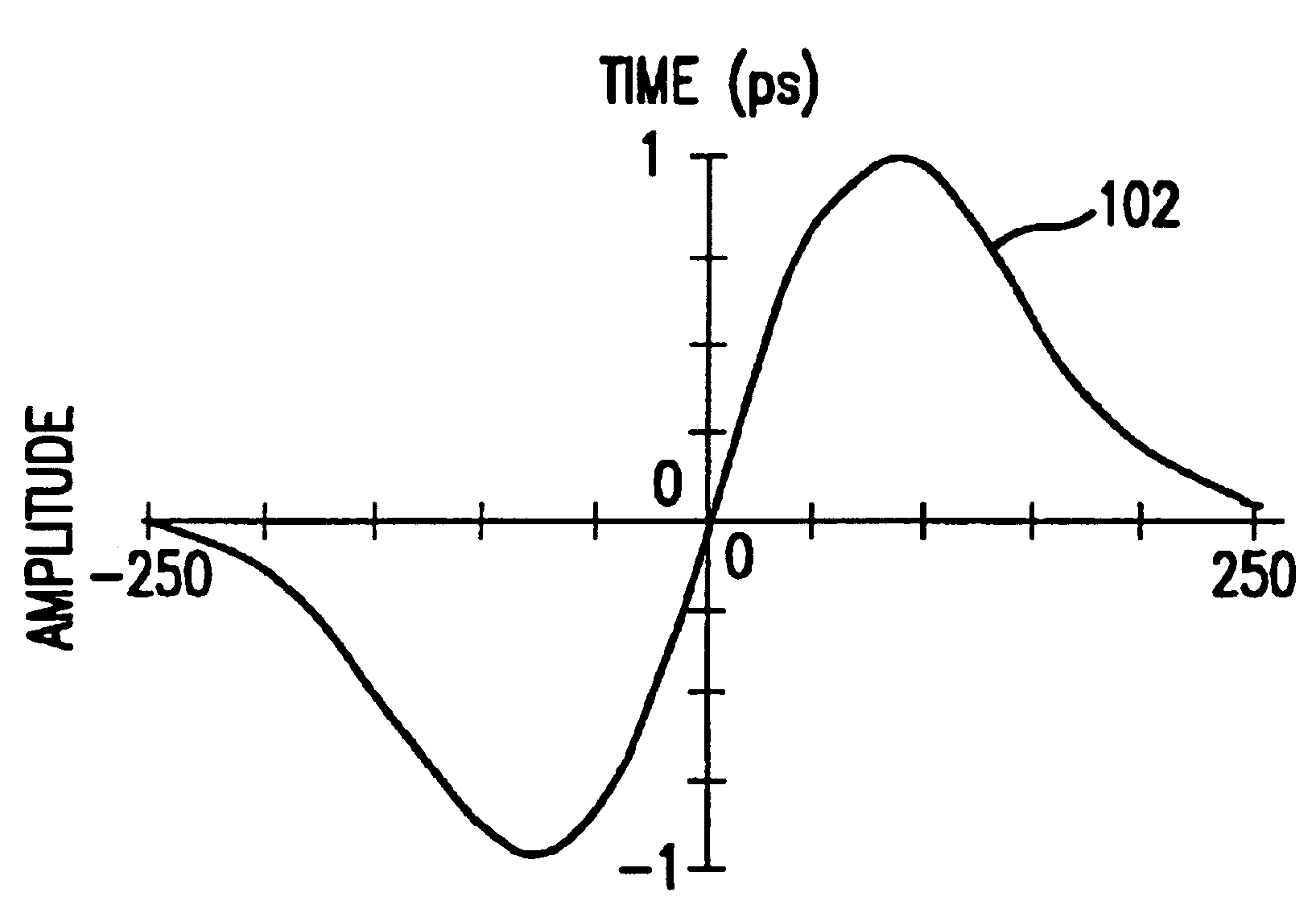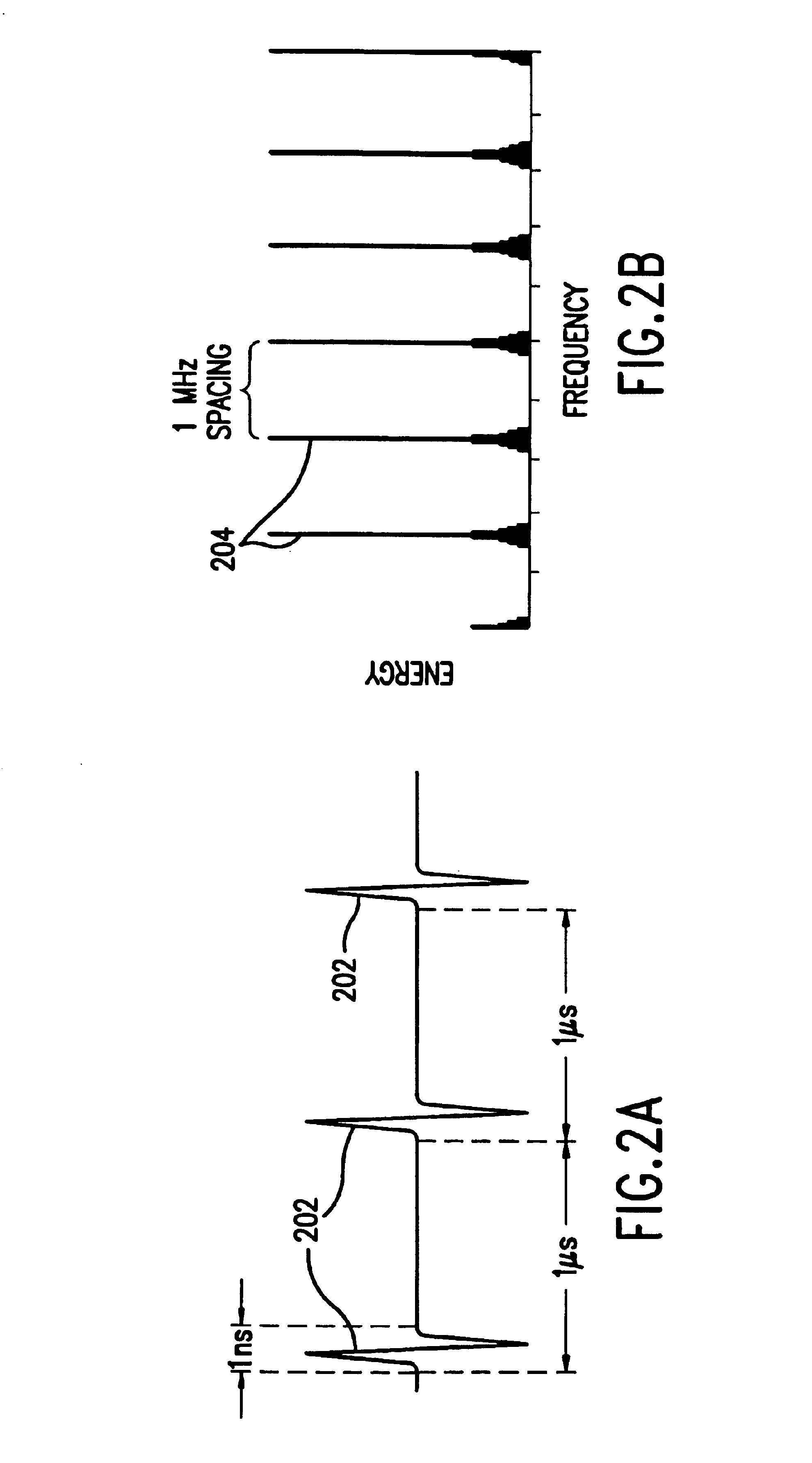Ultrawide-band communication system and method
a communication system and ultra-wideband technology, applied in the field of communication, can solve the problems of low power consumption, channelization and cost, reuse of available resources, etc., and achieve the effects of reducing distortion, increasing bandwidth, and adding fidelity
- Summary
- Abstract
- Description
- Claims
- Application Information
AI Technical Summary
Benefits of technology
Problems solved by technology
Method used
Image
Examples
Embodiment Construction
I. Overview
The impulse radio communication system is an ultrawide-band time domain system that operates in the time domain and uses one or more subcarriers to provide channelization, smoothing and fidelity. A single impulse radio transmission (e.g., a link) can therefore communicate many independent channels simultaneously by employing different subcarriers for each channel.
The impulse radio transmitter according to the present invention uses modulated subcarrier(s) for time positioning a periodic timing signal or a coded timing signal. Alternatively, the coded timing signal can be mixed (or summed) with the modulated subcarrier(s) and the resultant signal used to time modulate the periodic timing signal. Direct digital modulation of data is another form of subcarrier modulation for impulse radio signals. Direct digital modulation can be used alone to time modulate the periodic timing signal or the direct digitally modulated periodic timing signal can be further modulated with one o...
PUM
 Login to View More
Login to View More Abstract
Description
Claims
Application Information
 Login to View More
Login to View More - R&D
- Intellectual Property
- Life Sciences
- Materials
- Tech Scout
- Unparalleled Data Quality
- Higher Quality Content
- 60% Fewer Hallucinations
Browse by: Latest US Patents, China's latest patents, Technical Efficacy Thesaurus, Application Domain, Technology Topic, Popular Technical Reports.
© 2025 PatSnap. All rights reserved.Legal|Privacy policy|Modern Slavery Act Transparency Statement|Sitemap|About US| Contact US: help@patsnap.com



